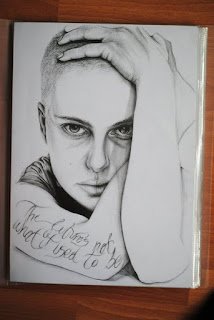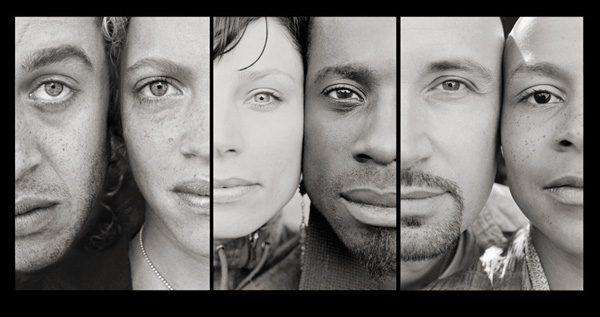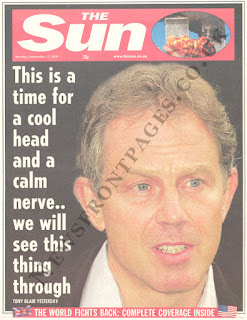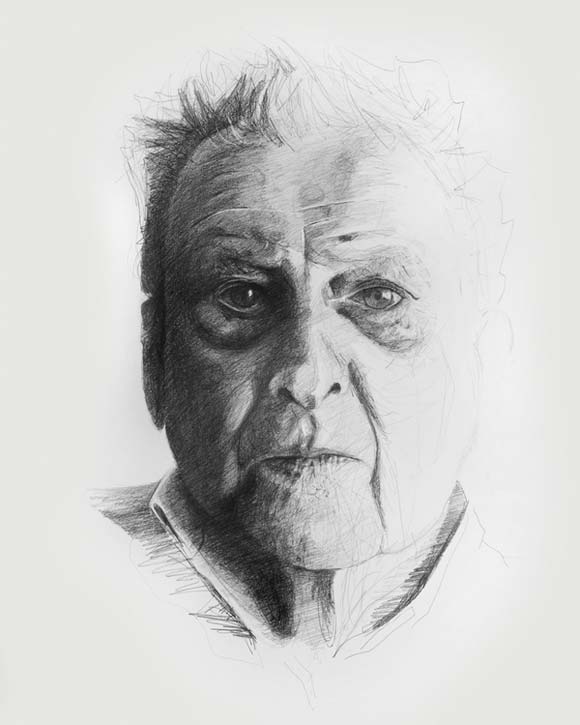During the “What Is Viscom?” project it took me a while to refine my brief in to something that felt realistic and achievable in the time scale we had until this deadline, but by the end of my last crit within the shorter module I felt as though I had developed a manageable brief for myself. Left to my own devices for three weeks over the easter holidays came with it's pros and cons. I decided to discipline myself and settle in to a steady daily routine of researching what I could about Tony Blair from various opinions, whether from the opinions of the general public and those that had observed his role publically, interviews with those that had worked with him closely, and various interviews during the end of his period as prime minister. Throughout the easter holidays I also took time everyday to read his autobiography, considering it would be the most direct way to learn about him, in his own words.
Whilst researching quite alot around my subject, I focussed heavily on producing developmental research in the form of portraits that conveyed various sides of his persona to direct my approach to my brief. I think at this stage of the brief I was too vague in what I wanted to do, and hadn't focussed entirely on a suitable approach until the last few weeks of the brief. In conversation with a friend, it struck me that all this work I had been producing for weeks represented Blair in a more human light to me, but not anyone else. Nobody was seeing Blair as a human, and this was ultimately where I wasted a lot of my time with quite a tunnelled vision of what exactly I wanted to do.
This major mistake in my work comes down to two things; my lack of communication and consultation with tutors when I needed it most (aside from critiques), and the fact I hadn't gathered opinions of my work from my peers and asked "Does this make Tony Blair look human?".
Before this realisation, I punished myself with my work, trying too hard to refine a very detailed and intricate style that didn't feel like illustration. This meant I spent so much time drawing his face repeatedly, it inevitably became unbearable boring and I unfortunately felt like I lost a lot of passion and enthusiasm for what I wanted to be the best brief of my year.
From this, I have learnt I need to consult my target audience on my work more frequently to determine that my direction is right, as well as asking "putting my hand up" and asking for help from tutors.
One of the man pitfalls I've tried my hardest to dodge was the idea I might end up ridiculing Blair and simply fuelling people's hate for him, as opposed to showing him in a different light, regardless of whatever existing view someone has before seeing my work. It was important for me then, to keep what would become my final serious. Once I had finished my critique with Matt and explained my predicament of still being clueless about my approach (or just needing a new one), a clearer idea began to take shape from something that had been in the back of my mind all along.
I envisaged portraying Blair in a gloomier light, in a weaker body and as someone who was very exposed. This meant trying to strip him of all his political context and profile, and of his memorable charisma. I also wanted to symbolise the period of the illustration, with undertones that hinted towards his guilt. By imagining him naked, or close to (which felt like an absurd and explicit idea at the time) I feel as though I've managed to show him in his most extreme form, and in a moment we can all maybe relate to.
It is a shame I only stumbled upon this key idea towards the last two to three weeks before the deadline, but I tried to spend time developing this idea as much as possible before paying attention to what would become my final.
Even though I feels like an accomplishment to cross the finishing line for this brief, and even the year, it still feels like an anti-climax for me on a personal level. Admittedly, I don't have confidence in my work for this brief achieving a grade I feel as though it may deserve, based on the fact I dithered around for too long with the wrong approach, but I also feel unsatisfied with my final A2 illustration. This is possibly down to the fact it stylistically steers away from my work in the first half of the brief, but also because it feels plain and comparitively poor when lined up with everyone else's work in an exhibition setting. I only wish I had more time to push this final idea further, and to rinse every possibility from it until it was refined to a standard I' am happy with.
Regardless of much of the negativity I've been riddled with for this brief and the unwelcome stress, I' am glad, maybe relieved, to have finally reached the finishing line of what became a strenuous brief that was eased and aided too late for me to potentially produce better work that stretched my practise enough. Nevertheless, it has been a regretless learning curve with an interesting subject matter that evoked a personal learning journey in to the unknown about Tony Blair's life.


























 Announcing the unfortunate death of Princess Diana and his role as the public's prime minister.
Announcing the unfortunate death of Princess Diana and his role as the public's prime minister.




















